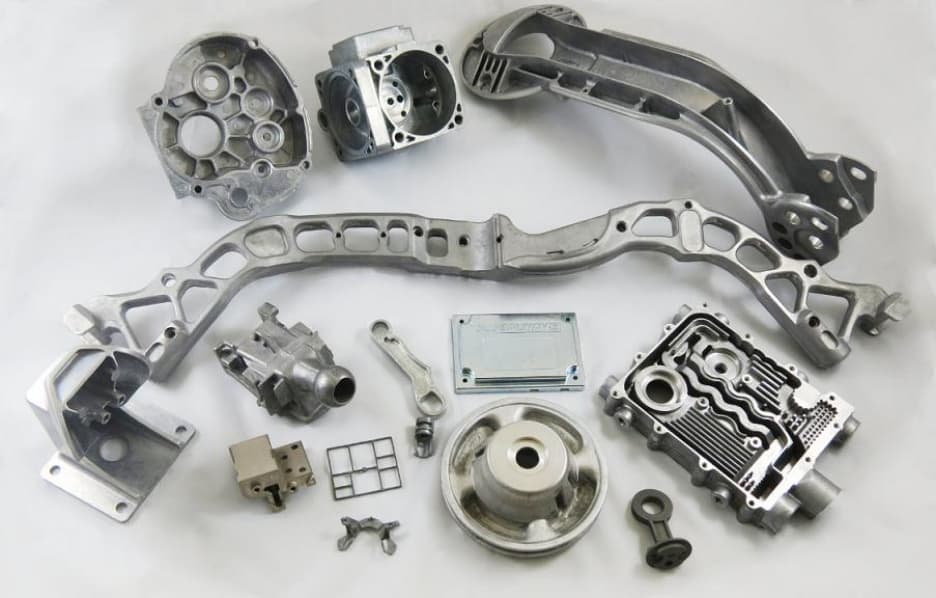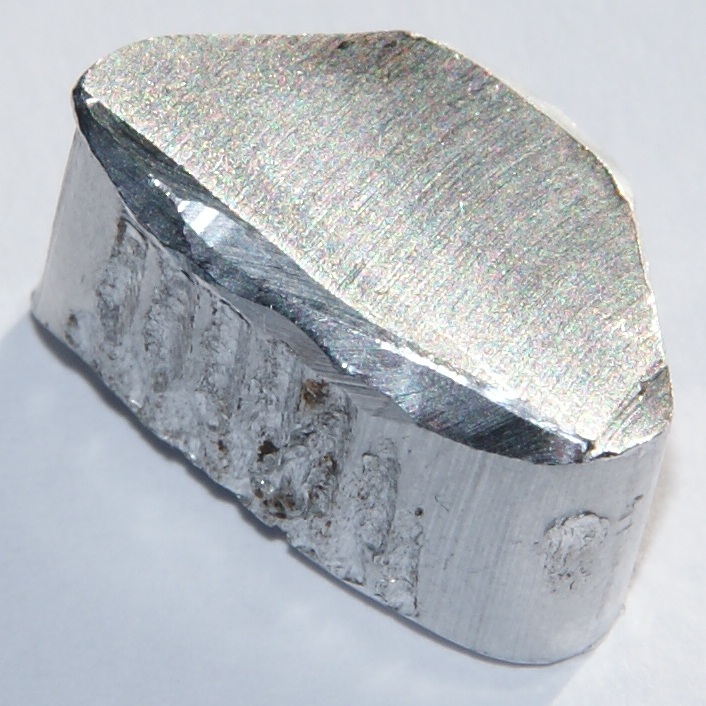The versatility of Aluminum Metal Casting in diverse industrial sectors
Wiki Article
Recognizing the Manufacturing Process and Upkeep Practices for Light Weight Aluminum Shop Products
The manufacturing process for light weight aluminum factory items is complex and needs a complete understanding of several phases. From the melting of aluminum at heats to different casting methods, each step plays an essential role. In addition, upkeep methods guarantee tools remains reliable and products are without defects. The intricacies of these procedures and their influence on item top quality raising crucial questions concerning finest techniques and cutting-edge strategies in the sector.Overview of Light Weight Aluminum Shop Products
Aluminum foundry products are essential components in different sectors, offering a blend of lightweight toughness and corrosion resistance. These items are commonly made use of in markets such as vehicle, aerospace, and building, where longevity and effectiveness are critical. Aluminum's reduced thickness makes it an ideal product for applications calling for reduced weight without giving up architectural honesty. The adaptability of light weight aluminum enables the development of intricate geometries, dealing with varied design needs.Aluminum shop items can be tailored with numerous alloys to enhance particular residential or commercial properties, such as boosted thermal conductivity or increased hardness. Their resistance to oxidation and rust warranties longevity, making them ideal for both indoor and outside applications. The mix of these qualities adds to the expanding choice for aluminum in modern production. As sectors look for to optimize efficiency and sustainability, light weight aluminum shop items continue to play a vital function in satisfying these needs.
Thawing Process: Transforming Light Weight Aluminum
The melting procedure is an essential action in the manufacturing of light weight aluminum foundry products, as it transforms strong light weight aluminum into a liquified state ideal for casting. This process normally takes place in a heating system, where scrap aluminum or ingots are heated to temperature levels around 660 degrees Celsius. The selection of heating system-- be it electrical, gas, or induction-- impacts the performance and price of melting.Throughout melting, mindful factor to consider is provided to the removal of impurities, such as oxides and other contaminants, which can adversely influence the high quality of the final item. Changes may be included in help in this purification process, enhancing the fluidness of the liquified metal.
On top of that, temperature control is important to guarantee harmony and prevent overheating, which can bring about oxidation. Subsequently, the melting process not only prepares light weight aluminum for casting however also plays a considerable function in determining the stability and buildings of the last shop products.
Casting Methods in Aluminum Factory
Numerous spreading strategies are utilized in aluminum shops to develop premium parts, each fit to different applications and requirements. Amongst one of the most frequently made use of approaches are sand spreading, pass away casting, and financial investment casting. Sand spreading makes use of a mixture of sand and binder to form mold and mildews, permitting intricate forms and huge components (aluminum foundry). Pass away spreading, characterized by the high-pressure injection of molten aluminum into steel mold and mildews, creates accurate and repeatable parts, perfect for automation. Financial investment casting, or lost-wax casting, includes producing a wax version that is covered in a ceramic shell, making it possible for detailed layouts and great details. Each method has its advantages; sand casting is cost-efficient for low-volume manufacturing, while die spreading uses performance for high-volume runs. Investment spreading is favored for elements needing remarkable accuracy and surface area coating. Choosing the appropriate strategy depends upon elements such as production quantity, part complexity, and material residential or commercial properties
Ending Up Processes for Light Weight Aluminum Elements
After casting strategies have actually formed the aluminum parts, completing processes play a substantial duty in enhancing their performance and visual appeal. These procedures generally include machining, surface treatment, and layer applications. Machining entails exact elimination of product to attain wanted dimensions and surface high quality. This is essential for guaranteeing that components fit seamlessly into their intended applications.Surface area therapies, such as anodizing and sprucing up, are used to improve deterioration resistance and improve aesthetic qualities. aluminum casting company. Anodizing, particularly, supplies a safety oxide layer, making the aluminum extra visually attractive and durable

Upkeep Practices for Longevity
Applying routine upkeep methods is important for making sure the longevity of aluminum foundry products. Regular inspections ought to be carried out to identify damage, as very early discovery can protect against costly fixings and expand the life expectancy of components. Cleaning up equipment and equipment frequently lessens the threat of contamination, which can adversely impact item quality. Lubrication of moving parts is likewise crucial, as it reduces friction and wear, boosting operational performance.In addition, the implementation of a preventative upkeep schedule assists in methodically attending to potential issues prior to they rise (Casting Foundry). This consists of checking for leakages, ensuring correct alignment, and adjusting equipment. Personnel training on correct handling and upkeep strategies fosters a culture of treatment, which is crucial for sustaining item honesty. Documenting upkeep activities provides important understandings right into efficiency fads, permitting for notified decision-making pertaining to future upkeep techniques.
Quality Assurance and Testing in Aluminum Shop Manufacturing
Quality control and screening are vital in light weight aluminum foundry production, as they guarantee that end products satisfy defined requirements and client expectations. This process starts with basic material examination, guaranteeing that aluminum alloys abide by required compositions. Throughout the manufacturing cycle, in-process inspections are performed to check criteria like material, temperature, and stress circulation.
Various Casting Foundry tests-- such as dimensional checks, aesthetic evaluations, and non-destructive screening-- are done to determine any issues when spreading is full. Mechanical buildings, consisting of tensile toughness and firmness, are assessed through standard testing methods.
Adherence to industry requirements, such as ISO and ASTM, is crucial for ensuring item quality. Analytical procedure control strategies are often used to analyze manufacturing data and assist in continuous renovation. By executing rigorous quality control procedures, light weight aluminum shops can improve item reliability and decrease waste, eventually resulting in better consumer contentment and operational performance.
Often Asked Questions
What Are the Ecological Influences of Aluminum Factory Procedures?
Light weight aluminum factory operations can result in considerable environmental effects, consisting of air contamination from emissions, water contamination from waste discharge, and energy consumption adding to greenhouse gas emissions, inevitably impacting local ecosystems and neighborhood health.How Do Light Weight Aluminum Rates Impact Factory Manufacturing Choices?
Light weight aluminum costs greatly influence shop manufacturing decisions; greater costs might result in lower output or increased effectiveness procedures, while reduced costs can encourage enhanced production and investment in new technologies to boost competition and success.What Precaution Are Vital in Light Weight Aluminum Foundries?
Necessary safety and security actions in light weight aluminum foundries include protective gear, appropriate ventilation to lower breathing of fumes, routine equipment maintenance, training on emergency situation procedures, and adherence to security procedures to avoid crashes and injuries among employees.Can Light Weight Aluminum Be Recycled, and How Is It Refined?
Aluminum can indeed be reused. The procedure includes collection, melting, and reforming the product right into new products, considerably reducing power usage and ecological effect contrasted to key aluminum production while protecting material top quality.What Prevail Problems in Aluminum Casting and Their Causes?

The manufacturing procedure for light weight aluminum factory products is elaborate and calls for an extensive understanding of numerous stages. Aluminum foundry items are critical parts in various markets, offering a mix of lightweight strength and deterioration resistance. The melting procedure is an essential step in the manufacturing of light weight aluminum foundry items, as it transforms solid aluminum into a molten state appropriate for casting. Carrying out normal upkeep practices is crucial for making sure the longevity of aluminum factory items. Quality control and screening are paramount in light weight aluminum shop production, as they ensure that last products meet defined criteria and consumer expectations.
Report this wiki page